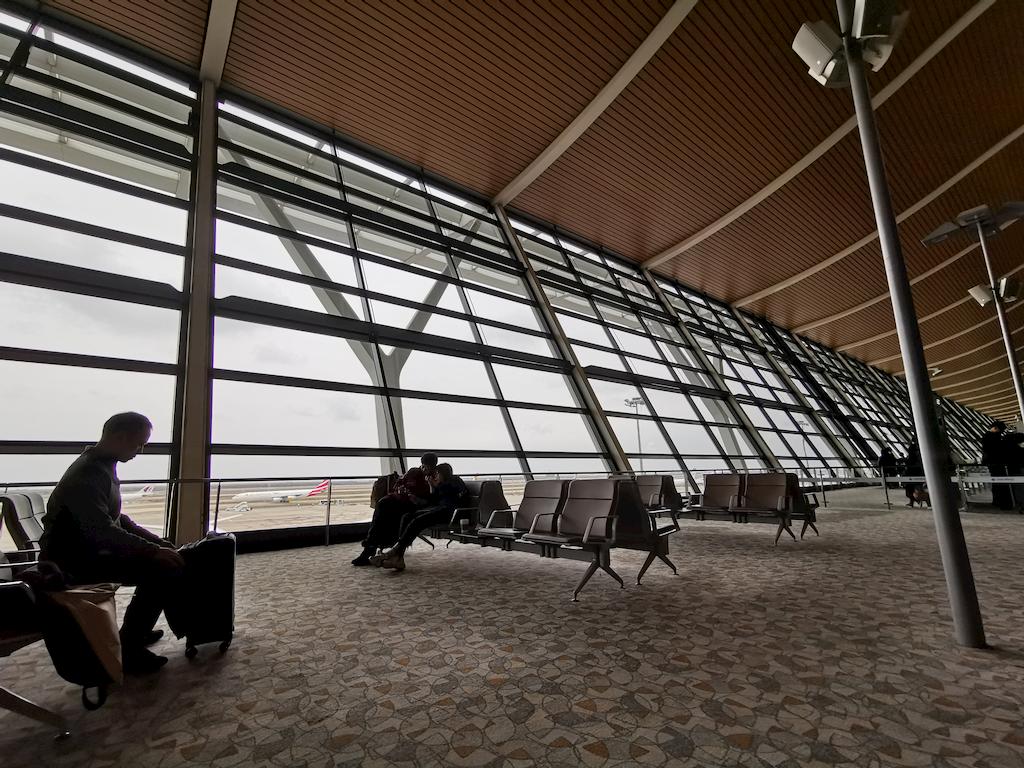The Social Paradigm Shift in Airport Terminal Design

DALLAS—Everyone is experiencing the sweeping impact of COVID-19 with each passing day. In preparing for this new normal, undoubtedly there will be a paradigm shift in the collective social experience, according to architectural firm, Corgan.
From work to communication and travel, the social readjustment post-COVID-19 could be significant. And this shift could be felt immediately in airport facilities. As the public returns to travel, design firms are pivoting designs to provide a passenger experience that aligns with new expectations for a new level of service.
During the coming year, Corgan’s aviation practice, in partnership with its research and innovation team, Hugo, will be exploring the impacts of COVID-19 on the passenger experience, and more importantly, identifying design solutions to best mitigate the effects of this paradigm shift. Corgan’s experts believe social distancing, touchless processing and wellness will be the most significant areas of concern and are prepared to help the aviation community acclimate to this new reality.
Social Distancing: To slow the spread of COVID-19, many health professionals including the Centers for Disease Control and Prevention have recommended the practice of social distancing. This is being practiced particularly in mass gathering situations such as the environment experienced in an airport. This begs the question, as people begin to frequently travel again, will they instinctively social distance? However, as an industry standard, airport facilities are not planned for such personal separation.
“Inherent in the planning of airport facilities is the use of queues, whether it be at check-in, security checkpoint, or customs and immigration, to process large groups of people. As the passenger experience adapts and evolves, we must do our best to move beyond this. If passengers were to maintain this distance throughout an airport facility, we would see a shift in the entire passenger experience from how they go through security, where they choose to wait for flights and how they board aircraft,” says Scott Gorenc, studio design director for Corgan’s aviation studio. “As we adjust to a new normal, we need to re-evaluate our understanding of personal space and incorporate design solutions that encourage the utilization of amenities while providing social boundaries.”
One design strategy that could be implemented today is the use of privacy walls on existing furniture to efficiently adapt present terminal environments while aligning with social distancing recommendations, he says.
“The concept of social distancing is an immediate solution to a serious threat. As the world returns to normal post-COVID 19, we can anticipate a new definition for personal boundary,” Gorenc tells GlobeSt.com. “At Corgan, we are researching human-centric solutions that can be applied to the existing terminal landscape to address this new definition. Whether it be through modifications to furniture or adaptations to existing processing protocols, what are the thoughtful design solutions that can marry the demands of the passenger with the functional requirements of an airport in a way elevates the experience?”
Touchless Processing: In addition to social distancing, the CDC recommends avoiding high-touch surfaces or frequently disinfecting them to lessen the spread of bacteria or germs. As passengers move through an airport facility, they will inevitably have contact with both people and materials in the terminal. Currently, most interactions in a terminal including those with airline staff, ticketing kiosks, TSA agents, baggage screening security bins, concessionaires or public seating, do not allow for compliance with these recommendations. The ultimate goal moving forward will be to eliminate physical touchpoints and create a touchless process that enables passengers to take control of their experience.
“Touchless processing is all about empowering passengers and reassuring them that it is safe to travel. Technology, such as biometrics and mobile apps, plays an important role here, but is only one part of this. Touchless processing is about re-evaluating the whole user-experience at an airport and asking ourselves whether it can be done better,” Gorenc tells GlobeSt.com. “The pandemic has brought much of the world to a standstill, including aviation. We owe it ourselves to take advantage of this. As we start to travel again, we want the airport experience to inspire delight–not exude anxiety. We look to accomplish this by giving passengers more control in their journey, giving them transparency in the process.”
The social readjustment to travel and exposure to public spaces after COVID-19 will be a hurdle for everyone. Adapting spaces for passengers and employees that they feel comfortable and less anxious in will be a priority moving forward. It is known that a building and its environment has a significant impact on the wellness of its inhabitants. Programs, such as the WELL Building Standard, have been established to ensure that the buildings people occupy enhance their overall well-being. With airports partaking a unique role in the well-being of our communities by providing connections between people, economies and society, the aviation community needs to consider the terminal’s impact on its passengers and adapt for these connections to continue safely.
“Passengers should be able to process seamlessly and move throughout a terminal fluidly,” says Gorenc. “First, we must analyze the current processing model to find innovative ways to reduce queue demands. Second, the time has come to deliver on the promise that biometric technology and automation will have on passenger processing. Right now, the main concern is health while traveling. How can we design so a passenger doesn’t feel anxious or worried about their well-being and what can we provide to safeguard their health in an airport environment? Evaluating and improving our existing infrastructure will be the primary focus of our wellness research. Identifying and implementing enhanced indoor air quality strategies will be vital to improving the air quality of terminal environments. Through a strong emphasis on human-centric design, the terminal experience could be less stressful and encourage passengers to focus on the delight of travel.”
Wait! Don’t miss out on the latest insights
Sign up for Saschse Construction’s
e-newsletter below!
Featured Topics
ARCHITECTURE + DESIGN
INDUSTRY NEWS
National

